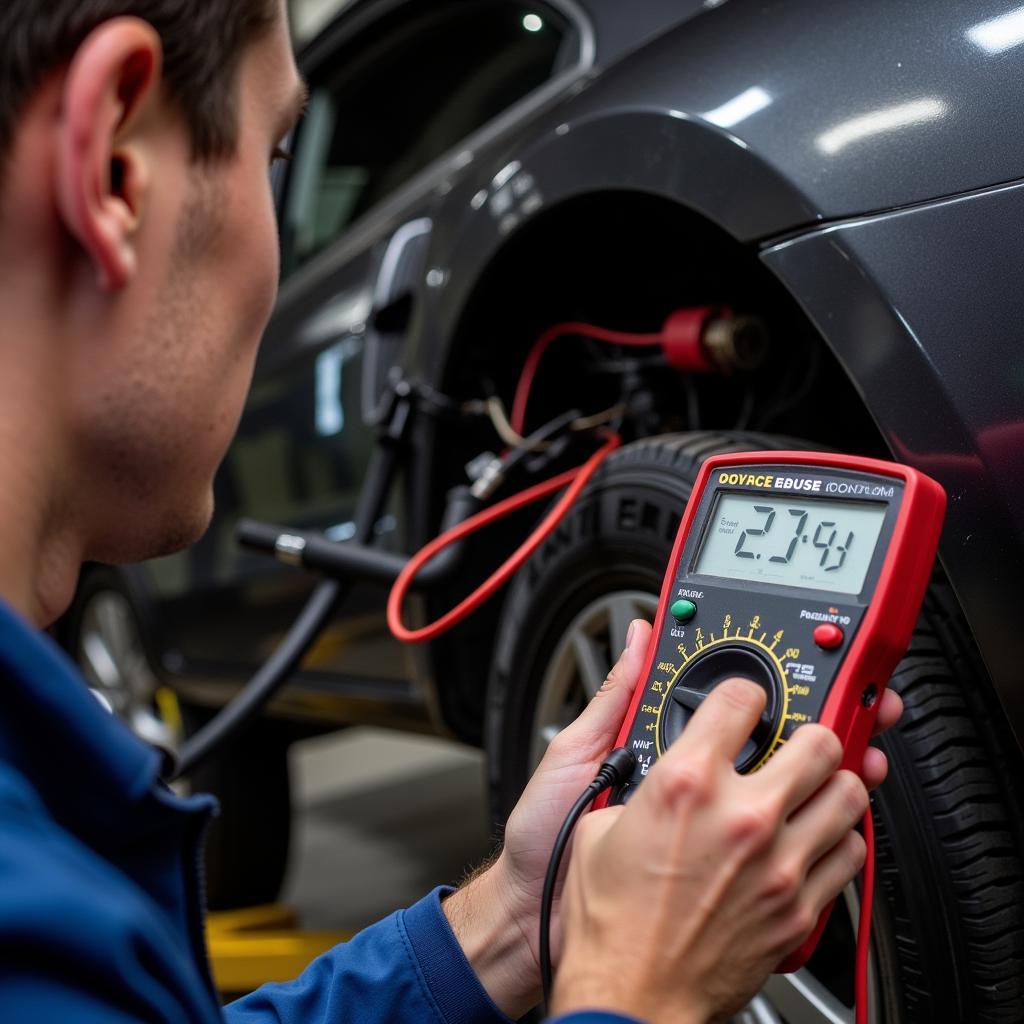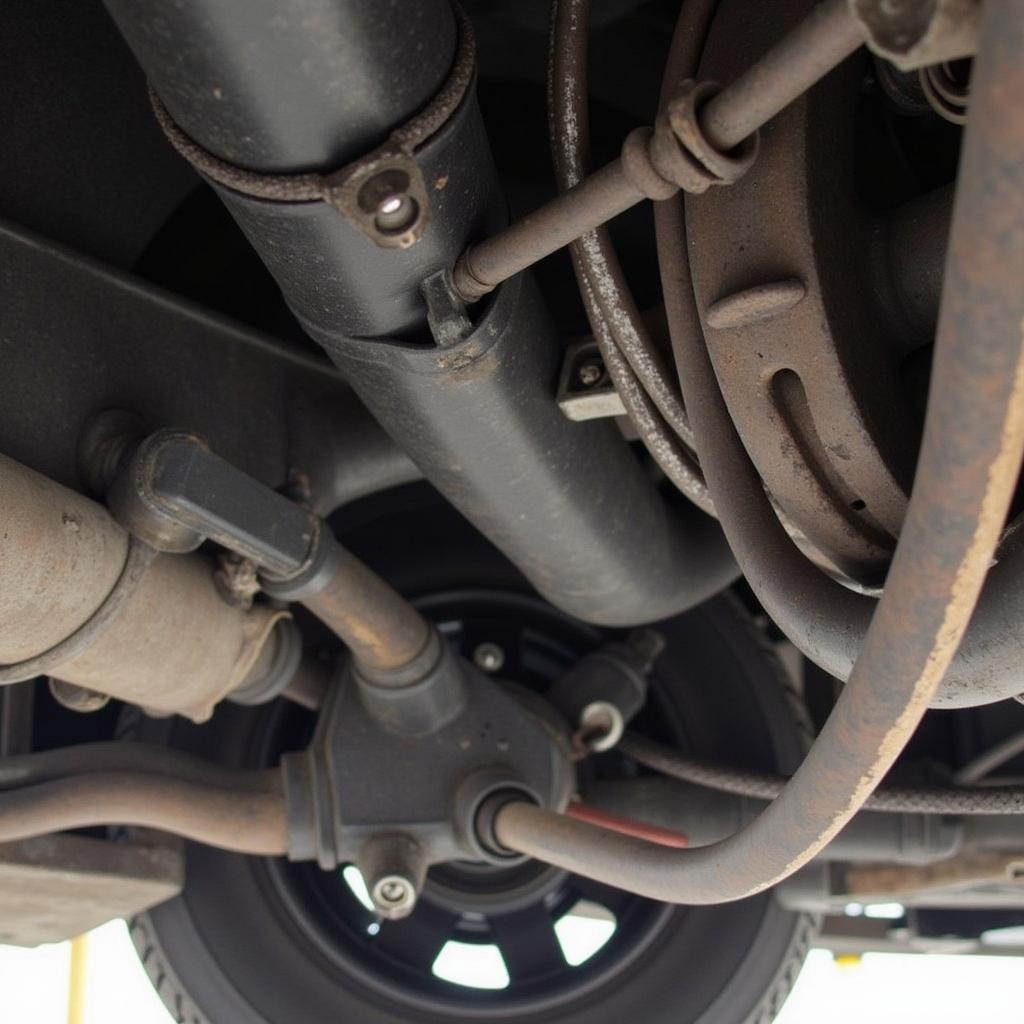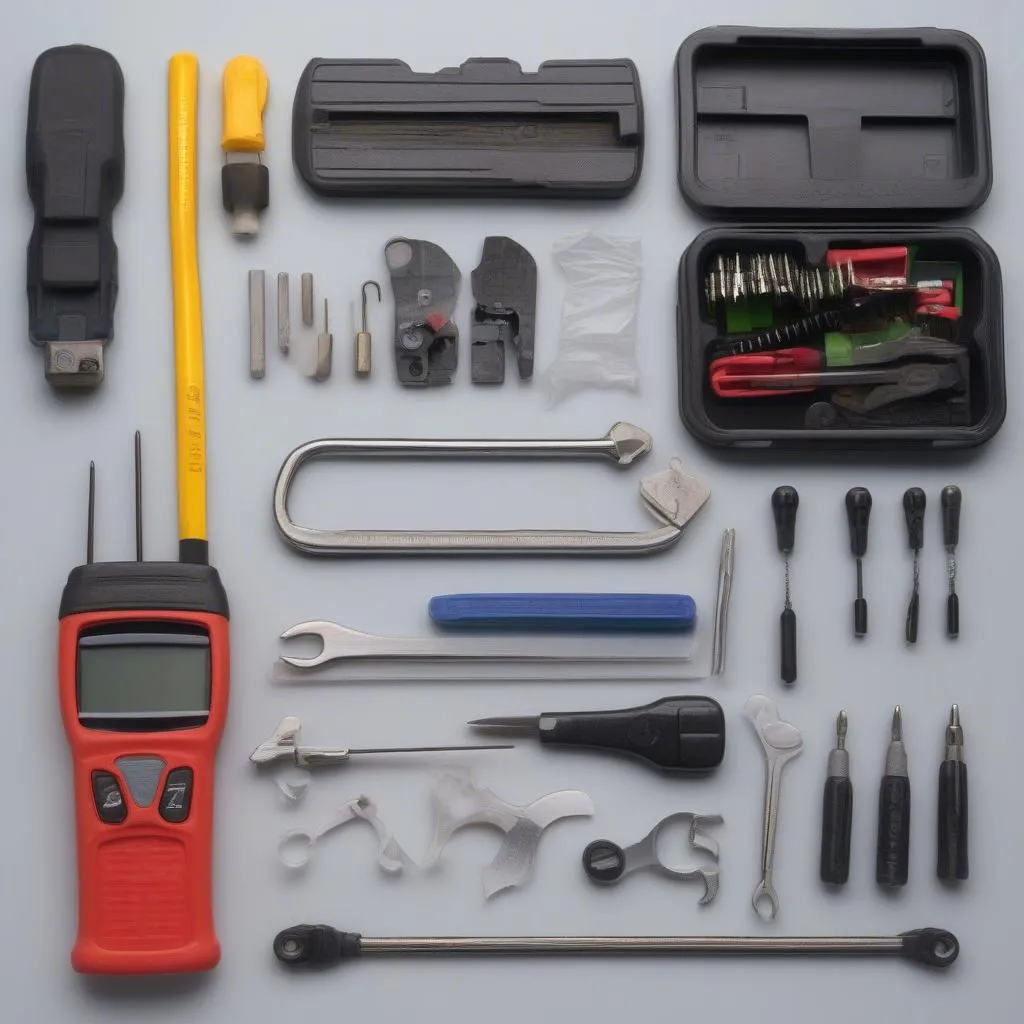The brake lamp warning light on your 2001 Honda Odyssey is a crucial safety feature that alerts other drivers when you’re slowing down or stopping. When this light illuminates on your dashboard, it indicates a potential problem with your braking system that requires immediate attention. Ignoring this warning light could compromise your safety and the safety of others on the road. This comprehensive guide will delve into the common causes of a brake lamp warning light on a 2001 Honda Odyssey and provide practical solutions to help you diagnose and fix the issue.
Common Causes of a Brake Lamp Warning Light
Several factors can trigger the brake lamp warning light on your 2001 Honda Odyssey. Here are some of the most common culprits:
1. Blown Brake Light Bulb
One of the most frequent reasons for the warning light is a simple yet crucial issue – a blown brake light bulb. Just like any other bulb, brake light bulbs have a limited lifespan and can burn out over time.
How to Check:
- Have someone press the brake pedal while you visually inspect each brake light at the back of your Odyssey.
- If a bulb is burnt out, it will appear significantly dimmer or completely unlit.
2. Faulty Brake Light Switch
The brake light switch, located behind the brake pedal arm, is responsible for activating the brake lights when you press the pedal. Over time, this switch can wear out, malfunction, or become misaligned, preventing the brake lights from illuminating correctly.
How to Check:
Diagnosing a faulty brake light switch often requires a more hands-on approach and some basic mechanical skills. If you’re uncomfortable working on your vehicle, it’s best to consult a qualified mechanic.
3. Blown Fuse
Your Honda Odyssey’s electrical system relies on fuses to protect various circuits from voltage overloads. A blown fuse in the brake light circuit can disrupt the flow of electricity, causing the brake lights to malfunction.
How to Check:
- Locate your Odyssey’s fuse box. Refer to your owner’s manual for its location.
- Identify the fuse associated with the brake lights. The fuse box cover usually has a diagram indicating the function of each fuse.
- Carefully remove the fuse and inspect it for signs of damage, such as a broken wire or a dark, discolored spot. If the fuse is blown, replace it with a new one of the same amperage rating.
 Replacing a Blown Brake Light Fuse in a 2001 Honda Odyssey
Replacing a Blown Brake Light Fuse in a 2001 Honda Odyssey
4. Wiring Issues
While less common, damaged, corroded, or loose wiring within the brake light circuit can also lead to malfunctions. Exposure to moisture, road salt, or physical damage can compromise the integrity of the wiring, interrupting the flow of electricity to the brake lights.
How to Check:
Inspecting the wiring harness for issues requires a thorough visual examination. Look for any signs of fraying, cuts, burns, or loose connections. If you discover any damaged wiring, it’s essential to repair or replace it as soon as possible to restore proper functionality to your brake lights.
Why is My Brake Light Warning Light Still On?
If you’ve checked all the usual suspects and your brake lamp warning light is still on, it’s time to dig a little deeper.
- Faulty Trailer Wiring: If you frequently tow a trailer with your Odyssey, there’s a possibility that the trailer wiring is causing the issue. A short circuit or a bad ground connection in the trailer wiring can interfere with the vehicle’s brake light system.
- Aftermarket Accessories: Installing aftermarket electrical accessories, such as trailer brake controllers or custom lighting, can sometimes introduce electrical gremlins into your vehicle’s system.
- Control Module Issues: In rare cases, a malfunctioning body control module (BCM) or other related control modules could be the root cause. These modules are responsible for various electrical functions in your vehicle, including the lighting system. Diagnosing and addressing control module problems typically require specialized diagnostic equipment and expertise.
“It’s important to remember that the brake system is critical for your safety,” says John Smith, a certified automotive electrician with over 20 years of experience. “Never ignore a brake lamp warning light. Addressing the issue promptly can prevent potential hazards and ensure your peace of mind on the road.”
What To Do If Your Brake Light Warning Light Turns On
- Pull Over Safely: If you’re driving and the brake light warning light comes on, safely pull over to the side of the road when it’s safe to do so.
- Inspect Your Brake Lights: As a precaution, engage your hazard lights and inspect your brake lights.
- Check for Obvious Issues: If you feel comfortable, take a quick look under the dashboard near the brake pedal to see if the brake light switch is loose or disconnected.
- Seek Professional Assistance: If you can’t identify or fix the problem yourself, it’s essential to seek help from a qualified mechanic or an automotive electrician.
 Mechanic Inspecting Brake Light Wiring on a Honda Odyssey
Mechanic Inspecting Brake Light Wiring on a Honda Odyssey
Conclusion
The brake lamp warning light on your 2001 Honda Odyssey is a safety feature that shouldn’t be ignored. By understanding the common causes and following the troubleshooting steps outlined in this guide, you can diagnose and address the problem effectively. Remember, a properly functioning brake light system is paramount for your safety and the safety of others while driving.


